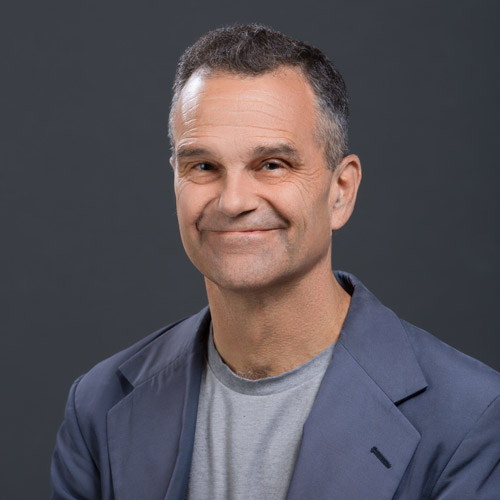Mass Ave Crossing Made Safer
Practicing what they teach, SPH group pushed safety measures

It’s not the healthiest spot for a School of Public Health employee: sprawled on the hood of a moving car. Yet Anita Raj found herself in that James Bond-ian position two years ago in the Massachusetts Avenue–Albany Street intersection.
The car’s driver, making a legal right-on-red turn, plowed into the SPH associate professor as she walked across the intersection separating the Crosstown Center from the Medical Campus. The driver, who had just left his heart attack–stricken mother at Boston Medical Center, was less than 100 percent vigilant. Raj, who slid off the hood, recalls her throbbing fear: “Oh my God, if he doesn’t stop soon, he is going to drive directly into me, and I am going to be killed or paralyzed.”
Fortunately, the driver did stop, leaving Raj with just cuts and bruises. But several similar near-tragedies have jump-started a student-led SPH advocacy group this year that has secured safety improvements at Mass. Ave. and Albany.
The accurately named Coalition of Fed Up Pedestrians met May 13 with Boston Transportation Department officials, who agreed to the group’s request for a protected left-turn signal from Albany Street westbound, allowing extra time for pedestrians to cross during peak-hours traffic before cars can turn left.
“This would remove conflicts between westbound left-turn vehicles and eastbound through- and right-turning vehicles, as well as conflicts with pedestrians,” says John DeBenedictis, the transportation department’s director of engineering, who is working with the students.
Coalition member Anindita Dasgupta (SPH’10) says the city has also promised to post more yield-to-pedestrian signs. Another request, for police officers to direct traffic at the intersection until the protected left turn’s projected July installation, remains under discussion.
“This is a huge success,” says Dasgupta. “We couldn’t be happier.”
The meeting followed the release in April of a coalition survey of 325 pedestrians who frequently cross the intersection. The survey found that 11 people reported being clipped by cars in recent years. Almost half (145) said they had had close encounters with vehicles in the intersection, and 149 said they felt unsafe at the crossing.
The intersection, which is close to administrative offices for Brigham and Women’s Hospital, is fed by a connector funneling cars from Interstate 93. Traffic counts from 2008 report that 2,789 vehicles flood the intersection during the morning rush’s peak hour and 3,120 during the drive-home peak, according to DeBenedictis. The nearby Mass Ave.–Melnea Cass Boulevard intersection is among the state’s most heavily traveled, he says.
To publicize their concerns, members of the coalition donned bubble wrap and helmets during National Public Health Week in April and walked with officials near the intersection, distributing information to passers-by.
The news of a breakthrough in safety discussions cheered people like Caleb Bliss (GRS’12), winged on the back of his leg by a car in the intersection in 2008 as he was crossing to go to work at the Crosstown Center.
The driver didn’t stop. Bliss was unhurt, but he remembers telling his supervisor that it was “only a matter of time before someone gets seriously injured.”
Rich Barlow can be reached at barlowr@bu.edu.

Comments & Discussion
Boston University moderates comments to facilitate an informed, substantive, civil conversation. Abusive, profane, self-promotional, misleading, incoherent or off-topic comments will be rejected. Moderators are staffed during regular business hours (EST) and can only accept comments written in English. Statistics or facts must include a citation or a link to the citation.